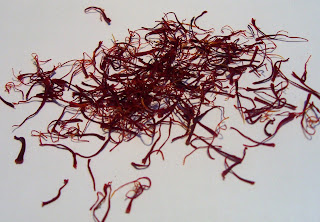2010
By Syed Akbar
Kumkum or saffron has been hailed as a natural remedy for
hyperpigmentation. But more than its beauty enhancing properties, saffron
also called kesar is a harmless painkiller and analgesic. It gives quick relief
from headache, abdominal discomfort and pain caused due to injuries.
Kesar finds its use in Ayurveda, Unani and homeopathy, besides in
traditional Indian cuisine. Though Kesar has a number of health benefits, it
should be consumed in limited quantities. The daily intake in no case should
exceed 5 grams, caution practitioners of natural medicine.
Ayurveda and Unani doctors prescribe kesar tea as a general health tonic and
for gynaecological problems. It is also used for increasing the power of
vision, for treatment of fevers and hypertension. While buying kesar one
should check its purity.
Kesar is used both internally and externally. Its external uses include
dermatological applications for problems like blemishes, wounds, cuts and
abrasions. Internally kesar is used for colouring food items, and as kesar milk
and saffron tea.
Ancient Indian texts regard saffron as a natural rejuvenator and appetiser.
-----------------------
Home remedies
-----------------------
Just a "tilak" of saffron paste, prepared by mixing kesar with milk, on the
forehead provides relief from headache.
For problems like hyperpigmentation, take four or five kesar pistils and soak
them in a little quantity of milk. Apply it gently on the face and massage the
affected portion.
Saffron tea is recommended for common cold, sore throat and upper
respiratory tract infections. It is also good for heart.
Kesar is said to be a good natural remedy for insomnia. Drink kesar milk
before going to bed for sound and peaceful sleep.

1 comment:
thank u sir very informative...
Post a Comment